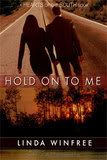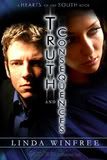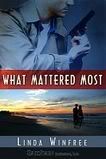Writing Tip...Characters
Wow, these Wednesdays sure fly around. They have been catching me by surprise and all of a sudden I'm scheduled to post.
Today I'm going to share a piece of an article I found on creating characters.
There's a million articles on the subject out there. Entire books, in fact. But the more I learn about writing, the more I value those simplistic yet powerful tips. That's why I loved this one.
I sent my manuscript, Safe In Enemy Arms, to my agent who read it and said the plot was a bit too complicated and the characters weren't "real" yet.
After two hellish weeks on revisions, I hadn't changed the plot, but I introduced its multi-faceted, yet connected elements slower.
My agent liked that. She thought it worked.
As for the characters, I worked them over pretty good too, strengthening their GMC, pumping up their emotions, even deepened a subplot and brought my villain into the limelight more often.
Unfortunately, she still said they weren't "3-D" enough. She said they didn't have that inherent quality that took them from the status of characters to real people, like she felt my characters in Hiding In Plain Sight achieved.
Uh-huh. Right.
I'll spare you the headache, heartache and confusion I went through in trying to figure out what this meant, exactly, but I will tell you the method I used to give me an alternate view inside my character's head. Maybe it will help you someday when you're staring at a heroine asking, "How the hell do I make you more real?"
I subscribe to two writing article loops and just about everyday I'm bombarded with writing-related craft articles. Most of them simply rehash the same stuff we've all read in other articles or in books. The ones that are exceptional, give me a different perspective, teach me something new or in a more comprehensive way, I add to my Articles links on my website.
A few days ago I read an article on character developement by Robert Gregory Browne (RGB), entitled Creating Characters That Jump Off The Page and found his perspective wholly unique and deeply helpful.
Instead of character interviews and getting into the nitty gritty psyche of a character extracting information that may or may not be relevent to his story, RGB broke it down to attitude, emotion, goal and action. I'm not going to rehash the article here, but I wanted to share a particular technique that resonated with me and got me over the wall I was experiencing.
You may have heard before that every character embodies a piece of the author. I thought that was true...with my first few characters. But as I branched out and gave my characters different histories, different professions, different families, different GMCs, I found I became distant from them -- hence the "non-3-D" issues. And of course I've been having a nightmare of a time with my villains which I spoke with Allison Brennan about at length. But that's a whole other post.
In relation to character development though, RBG brought it all back together for me with one simple concept: imagination + self.
He says every character he writes is him--hero, heroine, secondary, tertiary, one-liners. They're all him.
So, let's use my heroine from SIEA, Cassie: She is an independent physician suffering from the sudden, tragic loss of the two most important people in her life during the hardest year of her education and trying to find closure.
RBG suggests you ask yourself, if this were me, how would I handle the situation? Now, I'm not a physician, although I've worked with hundreds; I've never lost the most important people in my life, but I could imagine how I'd feel and attempt to cope if I did.
The next step is adding what he calls color: attitude and emotion. A=Independent, E=suffering.
So, knowing these key elements, how would **I** act if I were this character?
***WOW*** Definitely an I-could-have-had-a-V8 moment.
It hit the mark for me. Right then and there I realized I was trying to get into someone else's head, when all I had to do was stay in my own head all the time and just imagine. And all us writers have killer imaginations...making this technique not only as simplistic as daydreaming, but intensely powerful.
Just thought I'd share...hope it helps someone else banging their head against the wall trying to get under their character's skin.
Today I'm going to share a piece of an article I found on creating characters.
There's a million articles on the subject out there. Entire books, in fact. But the more I learn about writing, the more I value those simplistic yet powerful tips. That's why I loved this one.
I sent my manuscript, Safe In Enemy Arms, to my agent who read it and said the plot was a bit too complicated and the characters weren't "real" yet.
After two hellish weeks on revisions, I hadn't changed the plot, but I introduced its multi-faceted, yet connected elements slower.
My agent liked that. She thought it worked.
As for the characters, I worked them over pretty good too, strengthening their GMC, pumping up their emotions, even deepened a subplot and brought my villain into the limelight more often.
Unfortunately, she still said they weren't "3-D" enough. She said they didn't have that inherent quality that took them from the status of characters to real people, like she felt my characters in Hiding In Plain Sight achieved.
Uh-huh. Right.
I'll spare you the headache, heartache and confusion I went through in trying to figure out what this meant, exactly, but I will tell you the method I used to give me an alternate view inside my character's head. Maybe it will help you someday when you're staring at a heroine asking, "How the hell do I make you more real?"
I subscribe to two writing article loops and just about everyday I'm bombarded with writing-related craft articles. Most of them simply rehash the same stuff we've all read in other articles or in books. The ones that are exceptional, give me a different perspective, teach me something new or in a more comprehensive way, I add to my Articles links on my website.
A few days ago I read an article on character developement by Robert Gregory Browne (RGB), entitled Creating Characters That Jump Off The Page and found his perspective wholly unique and deeply helpful.
Instead of character interviews and getting into the nitty gritty psyche of a character extracting information that may or may not be relevent to his story, RGB broke it down to attitude, emotion, goal and action. I'm not going to rehash the article here, but I wanted to share a particular technique that resonated with me and got me over the wall I was experiencing.
You may have heard before that every character embodies a piece of the author. I thought that was true...with my first few characters. But as I branched out and gave my characters different histories, different professions, different families, different GMCs, I found I became distant from them -- hence the "non-3-D" issues. And of course I've been having a nightmare of a time with my villains which I spoke with Allison Brennan about at length. But that's a whole other post.
In relation to character development though, RBG brought it all back together for me with one simple concept: imagination + self.
He says every character he writes is him--hero, heroine, secondary, tertiary, one-liners. They're all him.
So, let's use my heroine from SIEA, Cassie: She is an independent physician suffering from the sudden, tragic loss of the two most important people in her life during the hardest year of her education and trying to find closure.
RBG suggests you ask yourself, if this were me, how would I handle the situation? Now, I'm not a physician, although I've worked with hundreds; I've never lost the most important people in my life, but I could imagine how I'd feel and attempt to cope if I did.
The next step is adding what he calls color: attitude and emotion. A=Independent, E=suffering.
So, knowing these key elements, how would **I** act if I were this character?
***WOW*** Definitely an I-could-have-had-a-V8 moment.
It hit the mark for me. Right then and there I realized I was trying to get into someone else's head, when all I had to do was stay in my own head all the time and just imagine. And all us writers have killer imaginations...making this technique not only as simplistic as daydreaming, but intensely powerful.
Just thought I'd share...hope it helps someone else banging their head against the wall trying to get under their character's skin.







3Comments:
I'm having a problem with characterization in the book I'm polishing to be pubbed. Well, I didn't know I was until someone brought it to my attention. I do see some of me in each of my main characters, but I am a person who hides my emotions, hence, I hide the emotions in my characters as well.
Thank you for this insight, hopefully it will make my characters 3-D!
Joan thank you so much for this! I'm having this problem with a novella I"m working on.......Maybe between editing and this I can figure it out!
Great advice! I recently attended Debra Dixon's workshop on GMC and your advice (or RGB's) is a great way to implement GMC. ***sigh*** So much to learn.
Post a Comment
<< Home